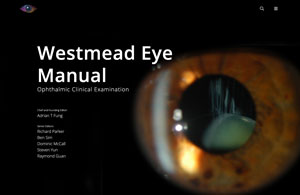5.2.2 Subretinal Perfluoro-n-Octane PFO Removal and Displacement
Subretinal perfluorocarbon liquid (PFCL) occurs in up to 11% of surgeries that utilise it. Subfoveal and sub-papillomacular bundle PFCL have the most significant visual implications. Visual loss may be due to mechanical alterations or a direct cytotoxic effect. It is accompanied by retinal thinning on optical coherence tomography (OCT) and a scotoma on microperimetry. Factors that increase the risk of subretinal PFCL include large retinal breaks, 360° retinectomy, residual traction around retinal breaks, and the use of small gauge instrumentation.
Not all subretinal PFCL requires removal. Despite subfoveal location, Nowilaty et al.[1] reported stable visual acuity of 20/40 over 10 years of observation. Extrafoveal PFCL is usually well tolerated with minimal impact on vision.[2,3] Observation is often the preferred approach in these cases. Subretinal PFCL may rarely migrate towards or away from the fovea, with one report describing spontaneous extrusion through a macular hole which subsequently closed without intervention.[4] In cases where subfoveal PFCL causes poor visual acuity, early surgical removal should be considered.
There are three surgical approaches for subfoveal PFCL removal:
- direct transretinal aspiration,
- displacement to an extramacular region by inducing a macular detachment and utilising post-operative posturing
- displacement and subsequent PFCL removal through an extrafoveal retinotomy.
Nowilaty SR. Ten-year follow-up of retained subfoveal perfluoro-N-octane liquid. Retin Cases Brief Rep 2007; 1: 41–43.
Garcia-Valenzuela E, Ito Y, Abrams GW. Risk factors for retention of subretinal perfluorocarbon liquid in vitreoretinal surgery. Retina 2004; 24: 746–752.
Suk KK, Flynn HW Jr. Management options for submacular perfluorocarbon liquid. Ophthalmic Surg Lasers Imaging 2011; 42: 284–291.
Oellers P, Charkoudian LD, Hahn P. Spontaneous resolution of subfoveal perfluorocarbon. Clin Ophthalmol 2015; 9: 517–519.
Direct transretinal aspiration may be preceded by internal limiting membrane (ILM) peeling to minimise the risk of a persistent macular hole.[5] Placing an intravitreal PFCL bubble on the macula before subfoveal PFCL aspiration may reduce the size of the foveotomy.[6] Gentle aspiration with a small gauge cannula (40-50G) from the edge or on top of the PFCL bubble is performed to prevent a submacular haemorrhage and subsequent fibrosis.
All rights reserved. No part of this publication which includes all images and diagrams may be reproduced, distributed, or transmitted in any form or by any means, including photocopying, recording, or other electronic or mechanical methods, without the prior written permission of the authors, except in the case of brief quotations embodied in critical reviews and certain other noncommercial uses permitted by copyright law.
Westmead Eye Manual
This invaluable open-source textbook for eye care professionals summarises the steps ophthalmologists need to perform when examining a patient.

